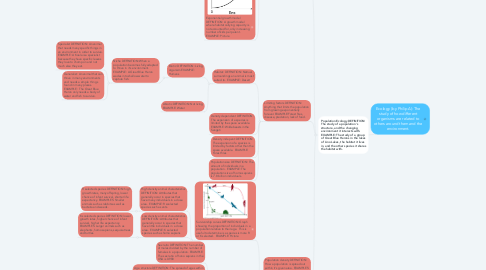
1. Population Ecology DEFINITION: The study of a population's structure, and the changing environment it interacts with. EXAMPLE: The study of a group of Great Blue Herons in the lakes of Lino Lakes, the habitat it lives in, and the other species it shares the habitat with.
1.1. Estimating population size: DEFINITION: A way of using interpolated data to make an educated guess about the number of individuals in a population. EXAMPLE: Mark and recapture method
1.1.1. Logistical growth model: DEFINITION: A growth model that accounts for carrying capacity of the habitat. EXAMPLE" Picture
1.1.2. Exponential growth model DEFINITION: A growth model where habitat carrying capacity is not accounted for, only increasing number of kids per parent. EXAMPLE: Picture
1.2. Limiting factors DEFINITION: Anything that limits the population from growing exponentially forever. EXAMPLE:Forest fires, disease, predation, lack of food.
1.2.1. Habitat: DEFINITION: Natrual surroundings an animal is most suited to. EXAMPLE: Desert
1.2.1.1. Biotic: DEFINITION: Living organism EXAMPLE: Humans
1.2.1.1.1. Niche DEFINITION: When a population becomes fully adapted to thrive in it's environment. EXAMPLE: A Great Blue Heron wades into shallow water to capture fish.
1.2.1.2. Abiotic DEFINITION: Not living EXAMPLE: Water
1.2.2. Density dependent DEFINITION: The expansion of a species is limited by the space available. EXAMPLE: Wildebeasts in the Sangeti
1.2.3. Density indepent: DEFINITION: The expansion of a species is limited by factors other than the space available. EXAMPLE: Forest fires
1.2.4. Population size DEFINITION: The amount of individuals in a population. EXAMPLE: The population size of homo sapiens is 7.8 billion individuals.
1.3. Population density DEFINITION: How a population is spread out within it's given area. EXAMPLES: Population density can be predetermined by some animal characteristics in R or K selected species as well as some clumps around resources or unexplainidly.
1.3.1. Survivorship curves DEFINITION: Graph showing the proportion of individuals in a population relative to their age. This is useful to determine is a species is more R or K selected. EXAMPLE: Picture
1.3.1.1. High density animal characteristics DEFINITION: Attributes that generally occur in species that have many individuals in a close area. EXAMPLE: R scelected species such as ants.
1.3.1.1.1. R selected species DEFINITION: high growth rates, many offspring, lower chance of infant survival, shorter life expectancy. EXAMPLES: Smaller animals such as rabbits as well as bacteria and weeds.
1.3.1.2. Low density animal characteristics DEFINITION: Attributes that generally occur in species that have little individuals in a close area. EXAMPLE: K selected species such as homo sapiens
1.3.1.2.1. K scelected species DEFINITION: lower growth rates, higher chance of infant survival, higher life expectancy. EXAMPLES: Larger animals such as elephants, homo sapiens, sequoia trees, and turtles.
1.3.2. Population: Number of animals that live in an area that can interbreed. EXAMPLE: The population of ducks in a pond
1.3.2.1. Sex ratio DEFINITION: The number of males divided by the number of females in a population. EXAMPLE: The sex ratio of hono sapiens in the USA is 0.980
1.3.2.2. Age structure DEFINITION: The spread of ages within a population. EXAMPLE: Japan has an aging population structure as less individuals in their reproductive stages are having children.
1.3.2.3. Distribution patterns: Different ways a population can be spread throughout it's given area. EXAMPLES: Clumped, Uniform, Random
1.3.2.3.1. Clumped pattern DEFINITION: When a population is all concentrated in a given area EXAMPLE: Beavers around a dam.
1.3.2.3.2. Uniform DEFINITION: When a population is evenly spread over it's habitat. EXAMPLE: Wildebeasts in the Serengeti equally distributing limited resources at the high end of the habitat's carrying capacity.
1.3.2.3.3. Random DEFINITION: A population is dispersed spontaneously across a habitat. EXAMPLE: Dandelions are dispersed randomly within a habitat because the wind dictates their placement.
